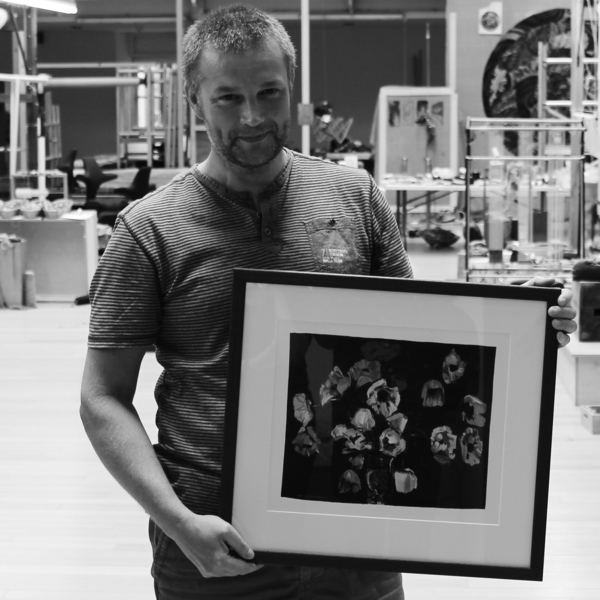Frank Stella and Dovecot Studios
The Had Gadya Tapestries, 1985-6
Tapestry
Handwoven
Wool and cotton
224 × 224 cm
Woven by David Cochrane, Shirley Gatt, Douglas Grierson, Harry Wright, Johnny Wright
The PepsiCo Headquarters in Purchase, New York was designed in the late 1960s by modernist architect Edward Durrell Stone. Completed in 1970, the headquarters was designed as the company expanded and outgrew its original Manhattan base and incorporated a large sculpture garden for the benefit of the employees as well as the local community and general public. The sculpture garden was created initially by the architect’s son, E D Stone Jr. Between 1981 and 1985 the landscaping was expanded and redesigned by British landscape architect, Russell Page, to become one of the largest accessible collections of twentieth-century public sculpture in the United States.
The sculpture garden was the vision of PepsiCo CEO Donald M Kendall – he sought to create an atmosphere on the PepsiCo campus of stability, creativity and experimentation. This ethos was not just manifested in the sculpture garden, but continued inside the building as well. In the leisure area of the office building itself, 90ft of clear wall had been created and had always been intended for artistic purposes. Kendall wanted these to be hung with newly commissioned, world class tapestries and commissioned Frank Stella to submit designs to be woven at Dovecot (then Edinburgh tapestry Company).
American artist Frank Stella was an important innovator in the field of Abstraction. His designs for 11 tapestries drew their origins from the Passover song Had Gadya. Stylistically they are influenced by Russian Constructivism – incorporating black and white cones, cylinders, circles and wedges. The initial designs were made using cut paper and shapes, areas of flat colour and pencil and painted marks. Translating these 3D designs, with their varying textures, forms and styles of mark making was a huge challenge for the weavers in translating these tapestries.















